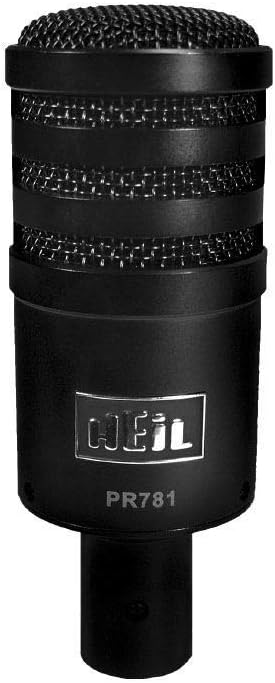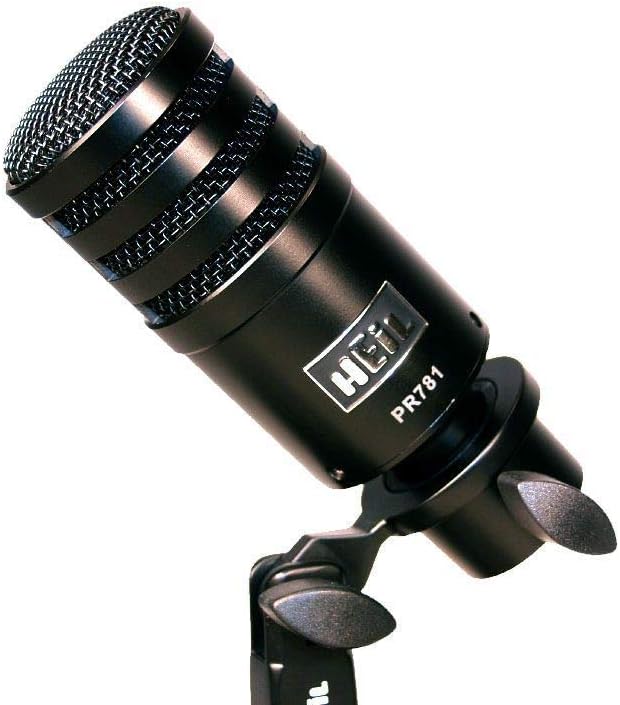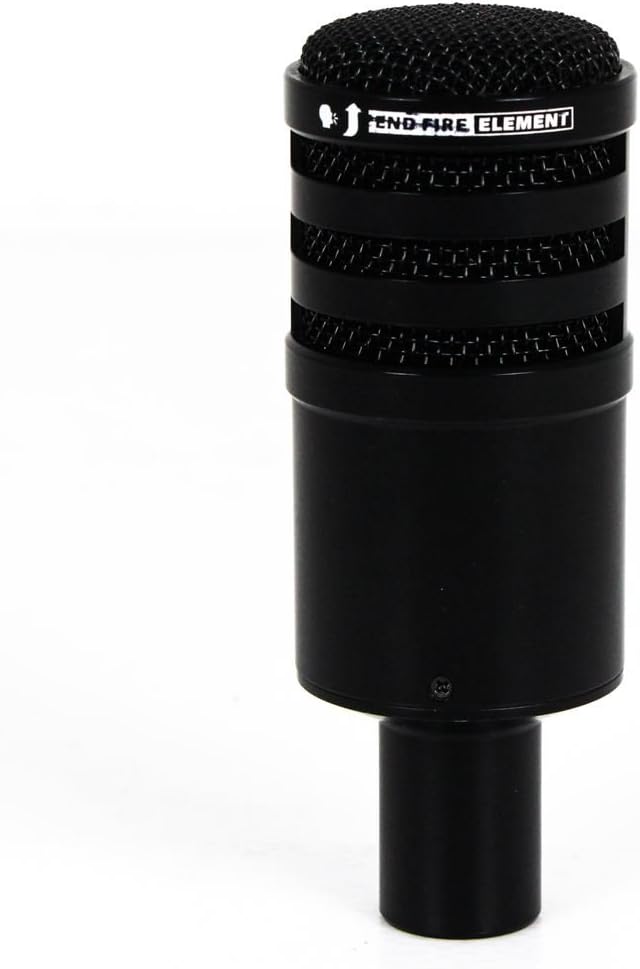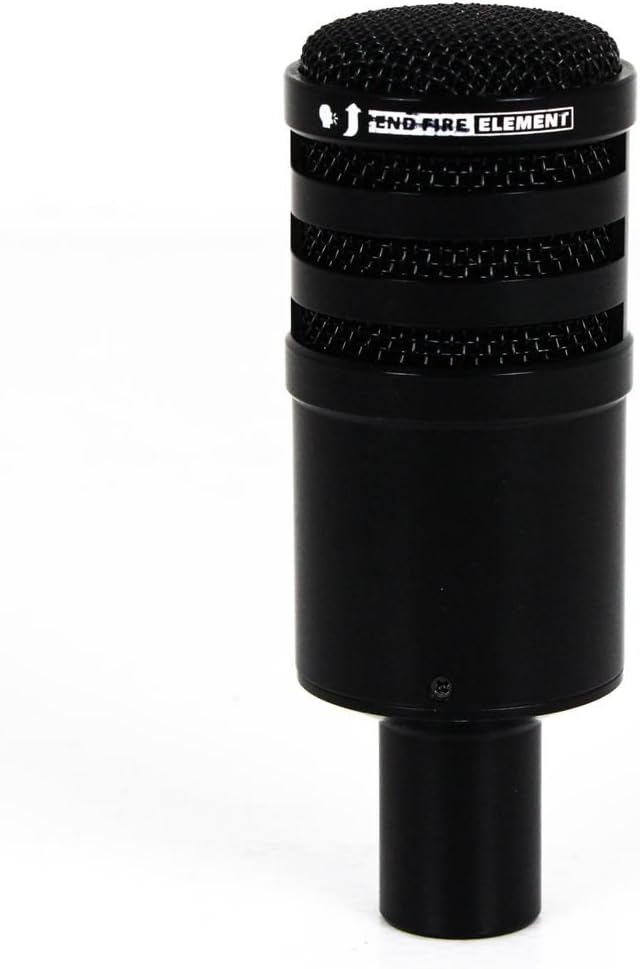Heil PR781 Review
The Heil PR781 is a dynamic cardioid microphone that has garnered significant attention in the amateur radio community and beyond. Designed by Heil Sound, a company renowned for its high-quality audio equipment, the PR781 is marketed as a professional-grade microphone tailored for elite transceivers and versatile enough for podcasting, broadcasting, and other audio applications. In this review, we’ll explore the design, build quality, sound performance, compatibility, practical applications, and overall value of the Heil PR781, drawing from user experiences, technical specifications, and hands-on insights to provide a thorough evaluation.
Heil PR781 Review In 2025
Heil Sound, founded by Bob Heil, has a storied history in the audio industry, initially gaining fame for its contributions to live sound reinforcement for artists like The Grateful Dead and The Who. Over the decades, Heil Sound expanded into the amateur radio market, leveraging its expertise in microphone design to cater to ham radio operators. The PR781 is a direct descendant of the PR780, a microphone developed at the request of ICOM for their flagship IC-7800 transceiver. ICOM sought a “super microphone” to match their super radio, and Heil delivered. The PR781 builds on that legacy, refining the formula with improved articulation and a wider frequency response tailored for ham radio enthusiasts and audio professionals alike.
Introduced as part of Heil Sound’s amateur radio division, the PR781 is positioned as a premium dynamic microphone. Its design philosophy emphasizes clarity, durability, and compatibility with high-end transceivers from brands like ICOM, Kenwood, Yaesu, and Ten-Tec. But does it live up to the hype? Let’s dive into the details.
Design and Build Quality
The Heil PR781 boasts an all-metal construction that exudes durability and professionalism. Weighing in at 14 ounces (approximately 397 grams), it feels substantial without being cumbersome. The microphone features a steel case finished in black satin epoxy, paired with a metal grill available in either black or gold variants (the PR781G denotes the gold grill version). This robust build suggests it can withstand years of use in a ham shack or recording studio, a sentiment echoed by reviewers who praise its ability to “take a beating or two.”
The microphone ships with the SM-3 mount, which uses standard 5/8-27 threads, making it compatible with most booms and desk stands. For those seeking lower noise and vibration isolation, Heil offers the optional PRSM-B shock mount, though it’s sold separately. The PR781 terminates in a 3-pin XLR connector, a broadcast-standard feature that ensures compatibility with a wide range of audio interfaces and transceivers, provided the appropriate adapter cable is used.
Aesthetically, the PR781 is understated yet elegant, with clean lines and a minimalist design that appeals to both radio operators and studio enthusiasts. The lack of an external windscreen is notable—Heil claims it’s unnecessary due to the microphone’s internal design—but users in windy or noisy environments might still consider adding one for outdoor or live applications.
Sound Quality
The Heil PR781’s sound profile is where it truly shines. Heil Sound has a reputation for designing microphones that emphasize articulation—the ability to clearly reproduce the nuances of human speech—and the PR781 is no exception. Drawing from Heil’s broadcast division, the PR781 uses a large-diaphragm dynamic element that delivers a wide frequency response while maintaining the “traditional Heil Sound speech pattern.”
In practical testing, such as Bandrew Scott’s review on Podcastage, the PR781 exhibits a pronounced treble boost that enhances clarity. This characteristic makes it particularly effective for cutting through the noise in amateur radio communications, where intelligibility is paramount. The microphone captures a full range of frequencies, from deep lows to crisp highs, though the treble emphasis can sometimes make it sound “bright” or “sharp” compared to warmer microphones like the Shure SM7B.
For ham radio use, this brightness is a strength. Operators frequently report receiving compliments on their audio quality when using the PR781 with transceivers like the ICOM IC-7851, Yaesu FTDX-101D, or Kenwood TS-990S. The microphone’s ability to “punch through” interference and deliver crisp, intelligible audio is a recurring theme in user feedback on platforms like eHam.net and Amazon reviews. One user noted, “Great mic, I received lots of compliments on my radio report,” highlighting its effectiveness in real-world conditions.
Beyond amateur radio, the PR781 holds its own in podcasting and broadcasting. When connected to a Focusrite Scarlett 2i2 (with gain set around 1:30–2:00, as tested by Podcastage), the raw audio requires minimal post-processing to sound polished. The microphone’s clarity and presence make it a viable alternative to more expensive studio mics, though it lacks the warmth some podcasters might prefer for a richer vocal tone. Its cardioid pattern also helps reduce room noise, though it’s not as forgiving of poor acoustics as a hypercardioid or shotgun mic.
One potential drawback is the lack of a published frequency response graph, which makes it harder to quantify the treble boost or assess the mic’s behavior across the spectrum. However, listening tests confirm that the PR781 prioritizes clarity over bass-heavy warmth, aligning with its intended use case.
Compatibility and Setup
The PR781 is designed with compatibility in mind, particularly for elite transceivers. Heil specifies it works seamlessly with models like the Kenwood TS-870, Yaesu FT-2000, ICOM IC-7600, and FlexRadio 6500 series, among others. To connect to these radios, users need the appropriate CC-1-XLR cable, which includes a 1/4-inch PTT (push-to-talk) jack for a footswitch or hand switch. These cables are sold separately and tailored to specific brands (e.g., CC-1-XLR-K for Kenwood, CC-1-XLR-Y for Yaesu), so buyers must ensure they select the correct one.
For non-radio applications, such as podcasting or streaming, the PR781 connects to any audio interface with an XLR input and phantom power isn’t required since it’s a dynamic mic. Users have successfully paired it with interfaces like the Focusrite Scarlett and mixers like the Behringer 802, often with excellent results. However, some FlexRadio users have questioned compatibility due to its absence from Heil’s official compatibility list, though community feedback suggests it works fine with the right adapter (e.g., XLR to 3.5mm with a separate PTT switch).
Setup is straightforward: attach the mic to a stand or boom, connect the XLR cable, and adjust the transceiver or interface settings. For ham radio, operators may need to tweak equalization settings to optimize the audio for their voice and operating conditions, but the PR781’s natural sound profile minimizes the need for extensive adjustments.
Pros and Cons
Pros
- Exceptional Clarity: The treble boost ensures crisp, intelligible audio, perfect for radio communication and podcasting.
- Robust Build: All-metal construction promises longevity and reliability.
- Versatility: Compatible with a wide range of transceivers and audio interfaces.
- Value for Money: At under $200, it offers premium performance at a reasonable price.
- No Phantom Power Required: As a dynamic mic, it’s plug-and-play with most setups.
Cons
- Treble Emphasis: May sound too bright for users preferring a warmer tone.
- Separate Cables: CC-1-XLR adapters add to the cost and complexity for ham radio use.
- No Frequency Graph: Lack of detailed specs might frustrate technical users.
- Optional Shock Mount: Additional expense for optimal noise isolation.
Conclusion
The Heil PR781 is a standout microphone that lives up to its billing as a professional-quality tool for amateur radio and beyond. Its durable construction, articulate sound, and broad compatibility make it a favorite among hams, while its versatility extends its appeal to podcasters and broadcasters. While it’s not without minor drawbacks—like the treble-heavy profile or additional cable costs—these are overshadowed by its strengths.
For amateur radio operators with elite transceivers, the PR781 is a near-perfect match, delivering the clarity and presence needed to shine on the airwaves. For content creators, it’s a solid contender that punches above its weight. Heil Sound has once again proven why it’s a trusted name in audio, and the PR781 is a testament to their commitment to quality and innovation.
If you’re in the market for a microphone that combines ruggedness, exceptional audio, and practical versatility, the Heil PR781 deserves a spot on your shortlist. Whether you’re calling CQ or recording your next episode, this mic has the potential to elevate your sound to new heights.




